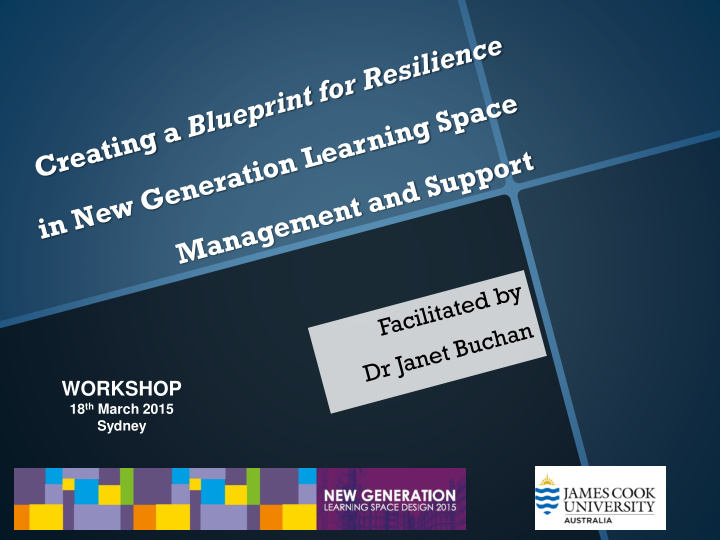



WORKSHOP 18 th March 2015 Sydney
All material presented in this document is provided under Creative Commons Attribution- NonCommercial-ShareAlike licence. CC BY-NC- SA http://creativecommons.org/licenses/by-nc- sa/4.0/
Reflect
Resilience Thinking builds the capacity to work with change as opposed to being a victim of it Resilience is the capacity of a system to undergo some change without crossing a threshold to absorb disturbance and to retain essentially the same structure function and feedbacks. (Walker & Salt, 2006)
The Ball in the Basin Model (Walker & Salt, 2006) of system Resilience What does your organisation’s basin look like? How is the ball travelling in your world?
STEP 1 Identify and understand the problem STEP 2 Where is your sphere of Influence/responsibility and locus of control for learning spaces (or other roles)? STEP 3 Analyse and describe the organisational environment STEP 4 Identify and plan actions STEP 5 Determine the Resilience Outcomes for the institution and individuals STEP 6 Carry out the action plan. Continuous improvement: PIRI
Play the Game
Identify your Sphere of Influence & Locus of Control
Tool: Para-analysis A para-analysis view of the impact of teaching and administrative systems used by academic staff in 2012. (Source: Buchan, 2014, Figure 5.6. p.155
The Adaptive Cycle Framework Determine the Transformability of the System
www.coalface.org.au
The future is not some place we are going to, But one we are creating; The paths to it are not found but made, And the activity of making them changes both the maker and the destination. Peter Ellyard as cited by Hogan 2003 Hogan, C. (2003) Practical Facilitation. A toolkit of Techniques . Kogan Page, London and Sterling, VA.
Recommend
More recommend